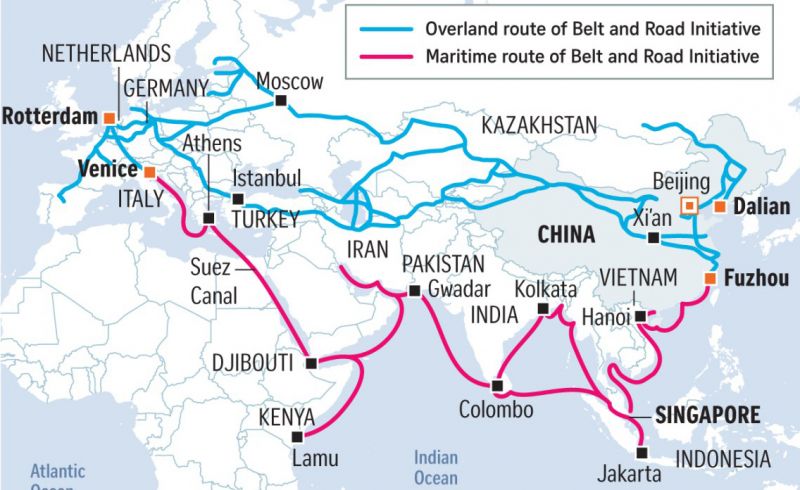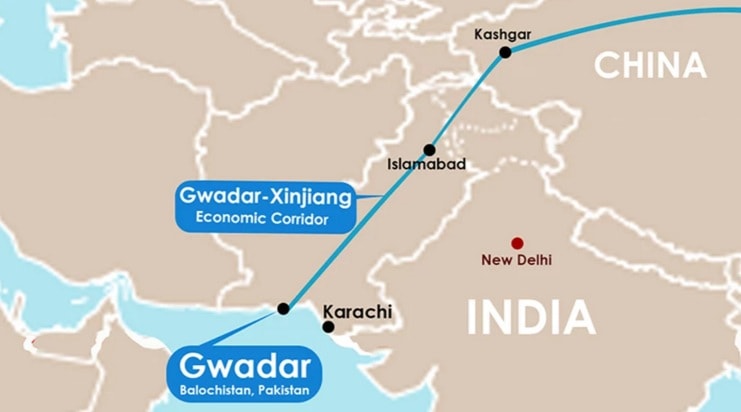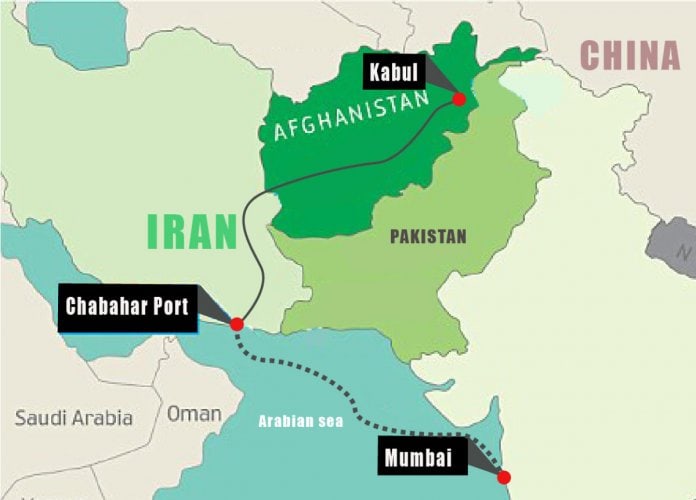Belt & Road Initiative (BRI) of China – Will it Benefit India?
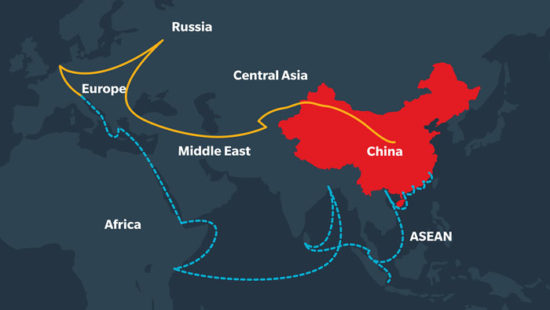
From Current Affairs Notes for UPSC » Editorials & In-depths » This topic
IAS EXPRESS Vs UPSC Prelims 2024: 85+ questions reflected
In 2013, Chinese President Xi Jinping launched China’s most ambitious project One Belt One Road (OBOR) which involves the building of two projects namely – Silk Road Economic Belt (SREB) and a 21st Century Maritime Silk Road (MSR). OBOR later came to be known as Belt and Road Initiative (BRI).
BRI is arguably the most ambitious global infrastructure project ever envisaged by one country. However, is this merely an economic project? or a geopolitical one of China? Will India get any benefit by joining this project or not? Let us discuss those issues in detail.
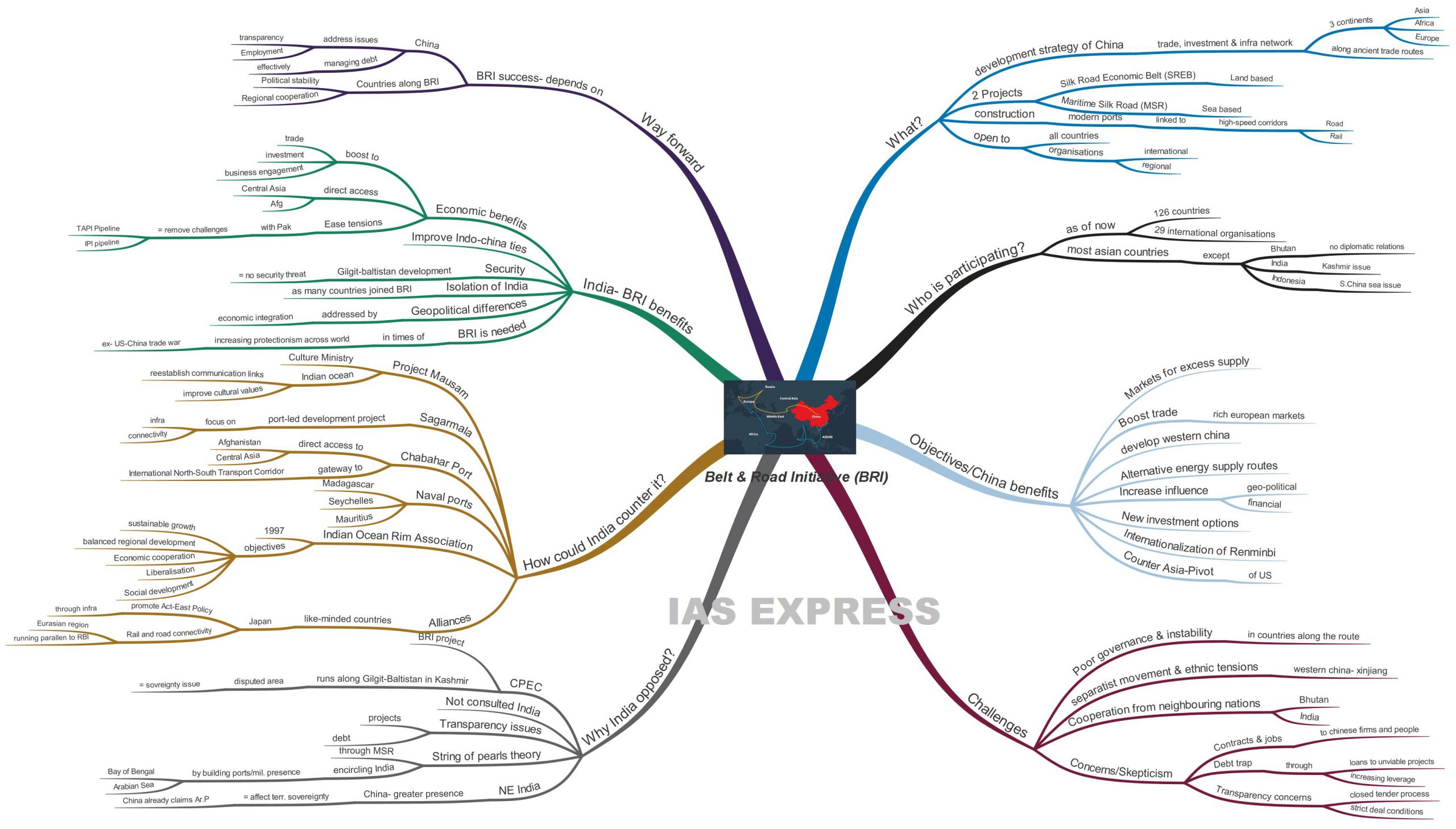
What is the Belt and Road Initiative (BRI)?
- In the ancient period, China and much of East Asia was connected to the other regions of the world through Silk Road which got its name from China’s main export item – Silk.
- Now, China is looking to rebuild the ancient route through BRI initiative.
- Belt and Road Initiative (BRI) is a development strategy to build a trade, investment, and infrastructure network connecting three continents – Asia, Africa, and Europe along the ancient trade routes.
- It consists of 4 projects
- Land-based Silk Road Economic Belt (SREB)
- Sea-based Maritime Silk Road (MSR).
- Ice Silk Road
- Super grid
- China is spending around $1 trillion to revive and renew the overland and maritime trade links through the construction of modern ports which are linked to high-speed road and rail corridors.
- The initiative is open to all countries as well as international and regional organisations for cooperation.
What are the projects under BRI?
Silk Road Economic Belt (SREB)
- The “belt” includes countries on the original Silk Road over Central Asia, West Asia, the Middle East, and Europe.
- The initiative would form a cohesive economic area by creating both hard infrastructures like rail and road links and soft infrastructures like trade agreements and a common commercial legal structure with a court system to monitor the agreements.
- It would enhance cultural exchanges and increase trade.
- Three belts are proposed.
- The North belt would go through Central Asia and Russia to Europe.
- The Central belt goes through Central Asia and West Asia to the Persian Gulf and the Mediterranean.
- The South belt runs from China through Southeast Asia and South Asia and on to the Indian Ocean via Pakistan.
- The strategy will integrate China with Central Asia through Kazakhstan’s Nurly Zhol infrastructure program.
21st Century Maritime Silk Road
- The maritime silk road essentially runs from the Chinese coast to the south via Hanoi to Jakarta, Singapore, and Kuala Lumpur through the Strait of Malacca via the Sri Lankan Colombo towards the southern tip of India via Malé, to the East African Mombasa, from there to Djibouti, then through the Red Sea via the Suez Canal to the Mediterranean, there via Haifa, Istanbul and Athens to the Upper Adriatic region to the northern Italian hub of Trieste with its international free port and its rail connections to Central Europe and the North Sea.
- The China–Pakistan Economic Corridor is an extension of the proposed Silk Road. The Maritime Silk Road coincides with the theory of China’s String of Pearls strategy.
Ice Silk Road
- Apart from the Maritime Silk Road, Russia and China are reported to have agreed to jointly construct an ‘Ice Silk Road’ along the Northern Sea Route in the Arctic, along a maritime route within Russian territorial waters.
- Chinese and Russian companies are collaborating on oil and gas exploration in the area and to advance comprehensive collaboration on infrastructure construction, tourism and scientific expeditions.
Super grid
The super grid project aims at developing six ultra high voltage electrical grids across China, north-east Asia, Southeast Asia, south Asia, central Asia and west Asia. The wind power resources of central Asia would form one component of this grid.
Who is participating in BRI and who is not?
- China has signed a cooperation agreement on the BRI with 126 countries and 29 international organisations as of now.
- Most of the countries in Asia and all of India’s neighbours, except Bhutan (as it does not have diplomatic relations with China) have taken part in the project.
- Some countries like India and Indonesia are wary of BRI as the project would cause a shift in the status quo in sensitive areas like Kashmir and the South China Sea.
What are the objectives of Belt and Road Initiative (BRI)? (How China Benefits?)
- Markets for excess capacity: BRI will help China access new markets for its excess capacity in the manufacturing and construction industries particularly steel, cement and machinery that will be utilised in the development of BRI infrastructures like ports, railways, pipelines, and highways.
- Boost trade: with the rich European markets by means of transportation links.
- Develop western regions of China: particularly Xinjiang which is relatively underdeveloped by increasing economic activities in those regions. Xinjiang has had ethnic tensions and is regarded as a vulnerability of China.
- Creating alternative energy supply routes: to the choke points of Straits of Hormuz and Malacca, through which almost all of China’s maritime oil imports pass.
- Increase influence: BRI can strengthen China’s influence over countries in both western and eastern hemispheres, reinforce its ambitions to become a maritime superpower and develop financial institutions competing with the Bretton Woods System (WB and IMF). Already China led financial institutions like Asian Infrastructure Investment Bank (AIIB) and New Development Bank (NDB) have been well received by the countries across the world.
- New investment options: China has accumulated a large amount of capital over the last few decades. It is now looking for new investment opportunities that preserve and increase the value of that accumulated capital.
- Internationalization of Renminbi: The massive overseas investment in the BRI will speed-up the internationalization of the Renminbi (China’s currency) just like the US Dollars.
- Counter Asia-Pivot: BRI is also seen as a strategic response to the military re-balancing of the United States to Asia which is famously called the Asia-Pivot strategy.
What are the challenges to Belt and Road Initiative (BRI)?
Poor governance and instability:
- The different levels of development and the poor governance conditions of countries along the BRI may affect infrastructure development, trade and investment in those regions.
- Moreover, the political instability in the increasing number of countries like Syria, Yemen, Sudan, etc. along BRI poses serious security issues for BRI.
Separatist movement and ethnic tensions: particularly in Xinjiang province prove to be a primary challenge for the development of BRI. Also, the regional disparity between the eastern and western regions of China complicates the use of the western region to connect to neighboring countries.
Cooperation from neighbouring nations:
- China has many sovereignty-related disputes with neighbouring countries such as India which makes them uncooperative with the BRI development.
- Furthermore, the potential ecological and environmental consequences, particularly in developing countries along the BRI, makes the project undesirable for many countries including India.
Concerns/Skepticism regarding BRI as follows:
Contracts and jobs:
- There are serious concerns regarding the contracts and jobs since the majority of them will be given to Chinese firms and people.
- Hence, there have been protests by people in several countries over the implementation of BRI.
Debt trap:
- Experts have pointed out how China is pushing countries in its debt trap by providing loans to countries for unviable projects and increasing leverage.
- Pakistan has already fallen victim to the Chinese debt trap as it has taken USD 50 billion dollars which are going to balloon to USD 80 billion over a 30 year period.
- Likewise, countries such as Cambodia and Sri Lanka have fallen into the debt trap of China.
Transparency concerns: There are several instances of nations like Nepal and Pakistan abandoning the deal with China to build the infrastructure project due to the closed tender process and strict deal conditions.
Why India disapproved Belt and Road Initiative (BRI)?
China-Pakistan Economic Corridor (CPEC): is the flagship project of BRI which links Kashgar in China to Gwadar in Pakistan. It is the main reason for India’s opposition to BRI…Read On.
Lack of consultation: with India before the launch of BRI is another reason for the opposition against BRI.
Transparency issues: India has mentioned the importance of openness and transparency when it comes to mutual agreements on infrastructure projects and makes debt repayments easier for recipient nations.
The string of Pearls Theory: Under Maritime Silk Route (MSR), China is building ports in Sri Lanka, Pakistan and Bangladesh so as to enlarge its military presence in the Bay of Bengal and the Arabia Sea through its economic might. Hence, MSR is nothing more than an economic disguise to the “String of Pearls” Theory.
North East India: China is countering India’s strategies in North East region by promoting a greater presence in these regions, part of which (Arunachal Pradesh) has been claimed by China as its own territory. This may have security implications for India.
How could India counter Belt and Road Initiative (BRI)?
India has already launched many connectivity initiatives of its own to counter the Belt and Road Initiative as follows.
Project Mausam:
- It is India’s soft power strategy.
- The project is under the Ministry of Culture.
- Its objective is to reconnect and re-establish communication links between countries of the Indian Ocean and improving their cultural values.
- This project focusses on the natural wind phenomenon, especially monsoon winds used by Indian sailors in ancient times for maritime trade, that has created relations amongst nations and groups connected by the Indian Ocean.
SagarMala:
- It is a port-led direct and indirect development project with a focus on infrastructure and connectivity.
- The project seeks to improve the capacity of major and non-major ports and also to start their modernization process.
Chabahar Port:
- India has been involved in the development of the chabahar port in Iran.
- Chabahar’s unique location provides India access not only to Iran but also to Afghanistan, central Asia, and Europe, bypassing Pakistan and considerably reducing current travel distances and time.
- Chabahar is also the gateway to International North South Transport Corridor (INSTC) which was initiated by India, Russia, and Iran. It will increase the strategic presence of India in the region…Read More.
Naval Ports:
India is also developing naval ports in Indian Ocean countries such as Madagascar, Seychelles, and Mauritius.
Indian Ocean Rim Association (IORA):
- India is involved in the grouping named Indian Ocean Rim Association which was established in 1997.
- The objectives are,
- Sustainable growth and balanced regional development in the region and member states.
- Economic Cooperation.
- Liberalisation.
- Social development.
Alliances:
- India is making alliances with like-minded countries like Japan.
- Japan has agreed to promote the “Act East” policy of India by developing and fostering reliable, sustainable and resilient infrastructure that strengthens connectivity within India and between India and other countries in the region.
- Japan and India could establish rail and road connectivity across the Eurasian region running parallel to the BRI.
Why should India join the Belt and Road Initiative (BRI)?
Economic benefits:
- It will provide many economic benefits such as a boost to trade, investment, and business engagement.
- It will provide direct access to Central Asia and Afghanistan.
- BRI would ease the tensions between India and Pakistan = remove the challenges in the implementation of two major energy cooperation projects such as Turkmenistan-Afghanistan-Pakistan-India (TAPI) gas pipeline and Iran-Pakistan-India (IPI) gas pipeline. These projects are really important for India’s energy security.
Improve Indo-China ties: BRI will increase cooperation between India and China at several global fronts.
Security: Development of Gilgit-Baltistan region through BRI would help reduce security threats in the region.
Isolation of India: All neighboring nations except Bhutan and several other countries from Central Asia and South-East Asia have joined BRI. Therefore, not joining BRI may result in the isolation of India.
Geopolitical benefits: Several geopolitical issues and differences can be addressed by means of economic integration.
Nearly every country across different continents have joined BRI. BRI is particularly important in times of increasing protectionism across the world. However, the success of BRI is mainly dependent on how China manages its debt as many countries that have joined BRI are in debt crisis and China need to address the issues of transparency and employment issues as well. Moreover, the political stability and regional cooperation in countries along BRI is also significant for the success of BRI.
If you like this post, please share your feedback in the comments section below so that we will upload more posts like this.
